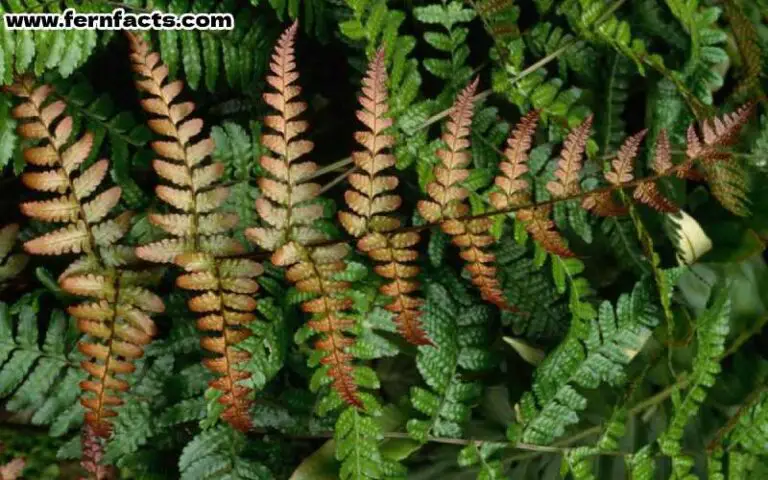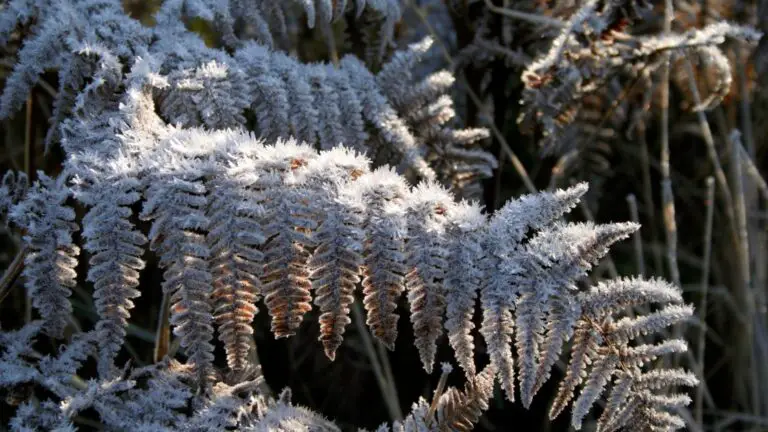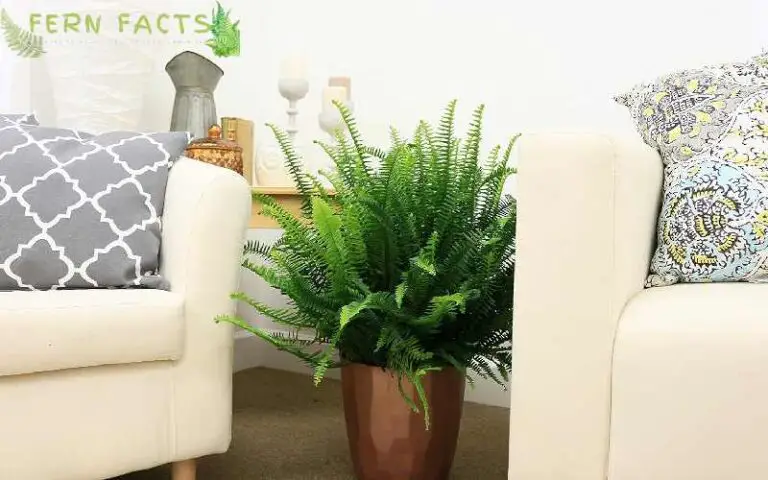Foxtail Asparagus Ferns- Information on the Care of the Foxtail Fern
Foxtail asparagus is one of the perennial ferns that people have both indoors and outdoors.
These plants give a subtle green aroma around the atmosphere with little white flowers during their blooming time.
If you are planning to buy these plants, then this article will provide you with all the information from top to bottom so that you can have a better grasp on these ferns.
Therefore, in this article, I will give you an overview of foxtail ferns and their characteristics, along with all the care and supervision needed to maintain them. So, let’s get into it.
Overview of Foxtail Fern

- Scientific name: Asparagus densiflorus
- Plant: Evergreen perennial
- Common names: Foxtail fern, asparagus fern, plume asparagus
- Native range: South Africa
- Height: 2 to 3ft
- Flowers: white
- Bloom time: spring, early summer
- Hardiness: zone 9 to 11
- Temperature: 65 to 75° F
- Shade: partial to full
- Soil: acidic, neutral, well-draining
- Toxicity: humans and pets
Foxtail ferns are the evergreen perennial plants which have fluffy herbs and stems like pine needle-like leaves. These plants are usually native to South Africa where it has immense growth.
However, you can still grow these foxtail ferns in your home both indoors and outdoors. One thing about these ferns, they are not true fern species because they do not use spores to generate rather they reproduce by seeds.
Still, these foxtail ferns are in the category of ferns because somehow they belong to the asparagus family.
You can plant them in your house or in your garden to have greenery near you. Mostly, these ferns are used as decoration or flower arrangements in homes, restaurants, or any indoor place.
These plants also have flowers that reproduce eye-catching red berries which gives this green plant a colorful effect.
Remember that their flowers, berries, or fronds might be mildly toxic to both humans and pets. Therefore, you need to be a little careful when dealing with these ferns.
Foxtail Ferns Care and Maintenance
Although ferns are still low-maintenance, they need care and some supervision to stay in good condition.
Let’s see some guidelines so that you can keep your ferns in shape.
Light
Foxtail ferns need partial to fully shaded light around themselves. Basically, if you can give them soft light areas with filtered shade, that would be a perfect light arrangement.
For your outdoor ferns, mild morning sun’s rays would be fine but not the afternoon sunlight. Heated afternoon sunlight can burn out their fronds or leaves, and even their flowers might dry out because of excessive sun exposure.
And so, for your indoor ferns indirect sunlight or filtered sunlight in a bright place would be the perfect atmosphere to give.
Soil
Foxtail ferns can deal with various soil types because they have a certain tolerance level in themselves.
However, it can tolerate any soil type as long as they have a proper drainage system otherwise there is a high chance of getting its root rot.
These ferns prefer acidic soil with a mixture of neutral and other organic matter in it.
Water
Foxtail ferns have tuberous roots means these types of roots have the tendency to store water within themselves.
So, even if you forget to water them for a couple of days, they can make themselves hydrated with their stored water elements.
However, there is a high chance that you might overwater them. Therefore, you need to maintain a balanced scheduled routine to water these plants, you can give these ferns water once a week.
But if you see their soil is moist or has water in it, then you can skip the watering.
Wait for the soil’s upper ⅔ to dry out completely then water them. Thus, you can do a thumb-check before watering your plants.

Temperature and Humidity
As they are native to South African areas, therefore these foxtail ferns are fond of warm, hot, and humid temperatures.
In order to maintain your indoor plants, you can keep a tray with pebbles and water to give them ambient humidity.
You can also do misting, it will nourish your plants even more. If you are living in a country where the hard zone is between 9a to 11b then you can keep your plants outdoors.
However, in winter or colder seasons, you need to take your potted ferns inside of your house because they are unloveable from too much cold and winter.
As these ferns can’t handle cold temperatures, therefore you need to give extra care to your ferns at those times.
Fertilizer
To give them rich Fertilizers, you need to mix all the matter to flourish themselves. You need to feed your ferns in the spring seasons. You can make a mixture of 10-10-10 plant foods with half-strength.
You can use both slow-release fertilizer and liquid fertilizer in the soil because they can be well adaptable with both mixtures.
For your outdoor plants, you can use amended soil, or compost topped with two inches of mulch in the soil annually in the fall season.
Pruning
To do their pruning, you need to remove the excess parts of stems from the base. It will give them a robust look and also increase their growth manually.
You can also pinch one inch off the stems in order to level up their growth.
Propagating
The most easygoing process is to propagate your plants through dividing. You can use a knife, or any spade to cut from the middle of your plants.
Then mix your soil conditioner together with the compost and mulch. Then, divide your main plants by ensuring each side has an equal amount of fresh roots and greenery.
Take two new pots or dig new holes in the ground and sprinkle the soil conditioned there with your plants.
Then you need to water your ferns thoroughly after propagation. Wait for a couple of days, then you can again spread the compost, soil, and mulch all together around the base of your ferns.
- Explore Further Trimming and Cultivating Foxtail Ferns.
Potting and Repotting
By potting and repotting you can strengthen their growth to some extent. If your plant is potted in a bigger plant then it might contain too much water.
Similarly, if your plants get bigger then pot might be little for the plants to grow fully. Therefore, you need to repot the plants with a new soil mixture, which will enhance their growth.
If you observe your plants becoming root-bound, then take the plants out from the pot and re-establish them with different pots comparatively larger than the previous one.
And so, you can take 2-inch bigger pots from the previous ones, so that they can get maximum space to breathe in it.
You can also buy clay pots or porous stones that absorb excess moisture and maintain the natural habitat within the plants.
Overwintering
These plants are perennial plants as they become dormant in winter times. Their growth gets minimal and we could say stop, the growth almost stopped at that period.
In that season, you need to remove the dead and damaged fronds of your foxtail and have to spread a layer of mulch in their base.
This mulch will keep the soil hydrated. For your potted ferns, replace your ferns in a sunny indoor area after refraining their fertilizer and cutting off all their dead fronds.
Even for your outdoor ferns do the same thing. You also can water them once a week after testing the soil’s moisture level.
Common Pests and Plant Diseases
These foxtail ferns are not that much sensitive to bugs and pests, still, the mealybug and scale insects could be an issue for these plants.
If you spot any kind of insects, then spray neem oil on their fronds. Even if their roots are too mushy and watery, they might be infected by fungal disease or powdery mildew.
Later this can lead them to have rotten roots. This might happen due to overwatering, therefore you need to balance the water level and have to give them the correct portion of water.
Common Problems With Foxtail Fern
The most common problem these ferns deal with is moisture in the soil. Both overwatering and underwatering can be harmful for them.
Overwatering can lead their leaves to turn yellow or brown and plants will die gradually. Even the tap water contains excessive chlorine which might harm the plants as well.
Even sometimes the correct lighting can be another reason for them to have yellow fronds. In such cases, change the place of your plants and relocate them to bright sunny places where they can get indirect sun exposure.
Recap
On a finishing note, these foxtail ferns are one of the decorated ferns that are used in many places as indoor and outdoor plants.
Because of their significant appearances, these plants take a corner in every gardener and plant enthusiast’s place.
However, in order to keep them thriving in your garden, you need to maintain some supervision, like caring for and maintaining these ferns.
By proper caring and observation, you can make these foxtail ferns flourish in your garden.







